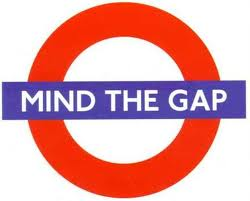As a rule, I never use my students’ mother tongue in my lessons. Of course, that’s not to say that my students don’t!
 Sometimes it can be useful. For example, if I’m teaching a new expression such as ‘It serves you right’ and someone shouts it out the Italian translation (‘Ti sta bene’) – well, it gives me good evidence that they’ve understood what it means. So I usually say ‘Yes, that’s right’ and get on with the lesson. It’s nice and quick and should be clear.
Sometimes it can be useful. For example, if I’m teaching a new expression such as ‘It serves you right’ and someone shouts it out the Italian translation (‘Ti sta bene’) – well, it gives me good evidence that they’ve understood what it means. So I usually say ‘Yes, that’s right’ and get on with the lesson. It’s nice and quick and should be clear.
In this way I don’t use the students’ L1 myself – and this can keep up the illusion that my lessons are events where we only use English to communicate with each other. I think that if I used Italian myself, it would break the ‘spell’.
Recently I’ve been experimenting with another way of getting my students to use their L1. It’s called ‘retranslation’ and I find it really helps my exam classes with the Use of English papers. It works at all levels and requires very little preparation. What more can we ask?!
The procedure goes something like this:
· Find a short text. Take this from the Use of English paper. It could be a paragraph e.g. I’ve used paragraphs from Parts 1, 2 or 3 from Cambridge First (it needs to be the complete version with the answers included) or a series of single sentences e.g. from Part 4 of the First exam.
· Give the text to your students and tell them to translate it into their L1. They can work in pairs or groups here. When finished, get them to fold over or cut off the original English text.
· Do something else for a few minutes e.g. correct homework. This means the original text will no longer be in the students’ short term memory.
· Now get them to look at their L1 text and translate it back into English. Again, they can do this in pairs. Make sure they understand that this isn’t a memory test – it’s not a problem if they have forgotten the exact forms used in the original test (actually, it works much better if they can’t remember them).
· When they’ve finished, they can compare their version with the original one. This is the interesting bit! Write the following questions on the board: Is this correct English? Does it mean the same as the original? Using these questions, students can explore – with the teacher’s help – the ‘gap’ between what they wrote and the ‘native speaker’ version.
· In a following lesson – a week later or even more – give them the First exercise for them to do i.e. with the gaps as they will find it in the exam. They will immediately recognise it and – in my experience – will be motivated to see if they can remember or work out what needs to go in the gap.
 Here is an example of a retranslation exercise that I did with one of my First groups. This is the original text, taken from Part 2 of the Use of English paper:
Here is an example of a retranslation exercise that I did with one of my First groups. This is the original text, taken from Part 2 of the Use of English paper:
Lake Titicaca, often known as the ‘holy lake’, is situated in South America on the border between Bolivia and Peru. The lives of the people whose tools and pottery have been found on its shores have long remained a mystery. However, scientists taking part in an exploration project have found what they believe to be a 1000-year-old temple under the water.
Here is my students’ version:
The Titicaca lake, known often like ‘holy lake’ is located in south America on the border between Bolivia and Peru. The persons’ life whose tools and ceramic were found on the sides remained a mystery for a long time. However, the scientists who take part in a project of exploration found that which they believe that is a 1000-years-old temple under the waters.
Some of the issues that came out of this particular exercise were:
- Articles: not with lakes (
theTiticaca lake) - Word order: (Lake Titicaca, not Titicaca Lake)
- Nouns in groups: the ‘s structure vs. the of structure vs. compound noun (The persons’ life .vs. The lives of the people / an exploration project vs. a project of exploration)
- Vocabulary: shores .vs. sides (for lakes)
- Singular vs. plural (life / water
s/ 1000-years-old) - Simple past vs. present perfect (was found vs. have been found / have found vs. found)
- Present simple .vs. continuous (take part vs. taking part)
- Ellipsis in relative clauses (scientists taking part…)
 What I like about retranslation is that is it clearly very focussed on grammar – and yet it has a very different feel from our usual grammar lessons. This is because it is the students who are deciding what they want to focus on. So you might use the same text with 2 different groups and the lesson will go very differently each time. And because it is so student-centred, there is a better chance that the new items will ‘stick’ and be remembered. Try it out and see what you think!
What I like about retranslation is that is it clearly very focussed on grammar – and yet it has a very different feel from our usual grammar lessons. This is because it is the students who are deciding what they want to focus on. So you might use the same text with 2 different groups and the lesson will go very differently each time. And because it is so student-centred, there is a better chance that the new items will ‘stick’ and be remembered. Try it out and see what you think!
PS Have a look at my post on Dictogloss for a different technique that creates a similar sort of lesson.



